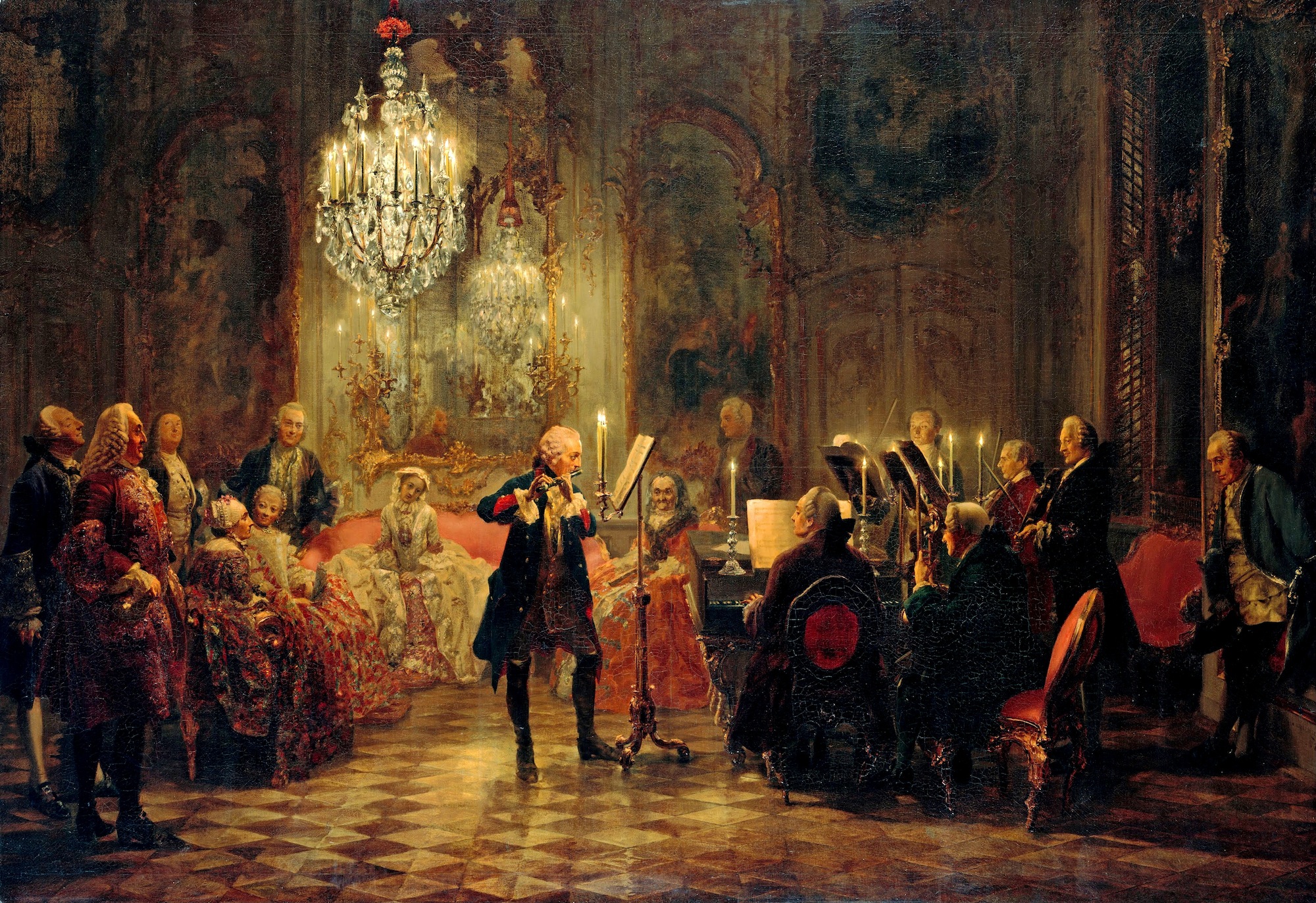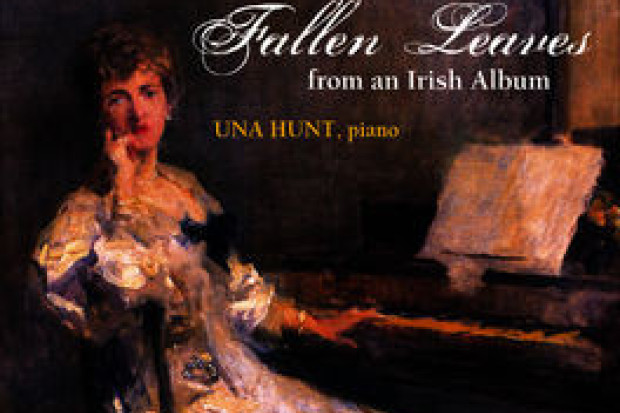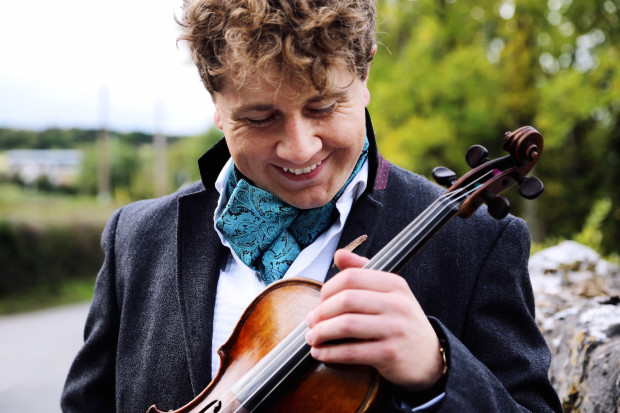
Frederick the Great playing the flute, with Quantz to the right leaning against a wall.
The Lesser Known Artists: W.F. Bach, Quantz and Kirnberger
The Irish Baroque Orchestra celebrates music from the eighteenth century in a tour reaching Dublin, Bandon and Sligo from 26–28 September. Directed by the English conductor and violinist Roy Goodman, the orchestra will be performing a programme titled Towards Enlightenment, which inclues music by well-known names Haydn, Mozart and C.P.E. Bach, but also less frequently performed composers such as W.F. Bach, Quantz and Kirnberger. We take a look at some of these lesser-known characters in advance of rare performances of their music being heard in Ireland.
Wilhelm Freidemann Bach
Wilhelm Freidemann Bach (1710–1784) was the eldest son of Johann Sebastian Bach and Maria Barbara Bach. He received his first compositional training from his father, who wrote a book of graded keyboard excercises for his son, and later studied law and mathematics at university. Much of Wilhelm Friedemann’s life, however, was bedevilled by problems with money and an inabilty to secure stable work; through his marriage to Dorothea Elisabeth Geori, for instance, he was placed in a cripplingly high tax bracket, and in a six year period of employment as an organist in Halle, Bach was said to have caused conflict through misappropriating funds, overstaying a leave of absence, and multiple attempts to leave his post. David Schulenberg, writing in The Oxford Composer Companion: JS Bach notes much of W.F. Bach’s misfortune may have been due to a mixture of his personality and musical views, being ‘evidently less willing than most younger contemporaries to compose fashionable, readily accessible music’.
Johann Joachim Quantz
Living through much the same period, Johann Joachim Quantz (1697–1773) had an easier time of things, becoming a renowned flute player and composer, even working for Frederick II of Prussia (Frederick the Great) at one stage. Quantz defied his father’s dying wishes – to follow in his footsteps of being a blacksmith – and studied composition in both Dresden and Vienna. Quantz now lends his name to a model of flute due to his innovations to the instrument: in 1739, dissatisfied with the instruments available to him, the composer started to make his own flutes. Quantz’s flutes, eight of which remain today, differ from other models of the period due, notably due to the adoption of a tuning slide and screw cork. He also wrote an important treatise on flute playing in which he outlined the ‘clear, penetrating, thick, round, masculine, and withal pleasing sound’ that he liked to achive.
Johann Philip Kirnberger
Somewhat younger than W.F. Bach and Quantz, Johann Philip Kirnberger (1721–1783) is known as a theorist as well as a composer. He too worked for Frederick the Great, as well as the prince’s younger sister, Princess Anna Amalia, and was a student of Wilhelm Freidemann’s father, J.S. Bach. Kirnberger’s music may be not be as well known as that by some of his contemporaries, but his theoretical work Die Kunst des reinen Satzes in der Musik (roughly meaning the art of composition) and his work on tuning systems are important legacies. Kirnberger is known to have developed three tuning systems (or temperaments). Kirnberger I is similar to Pythagorean temperament, which prioritises pure tuning of perfect fifths throughout the circle of fifths as far as possible. In his second system, Kirberger changed two of the fifths slightly in order to make the system closed, i.e. that one could keep going around the circle of fifths without the tuning changing. In Kirnberger III (the names are modern inventions, by the way), Kirnberger changed the system again so that there was a greater compromise, ensuring that more of the intervals were closer to being in tune, but that there was only one pure third (between C and E). The following video demonstrates the third tuning system with Johann Sebastian Bach’s music.

















